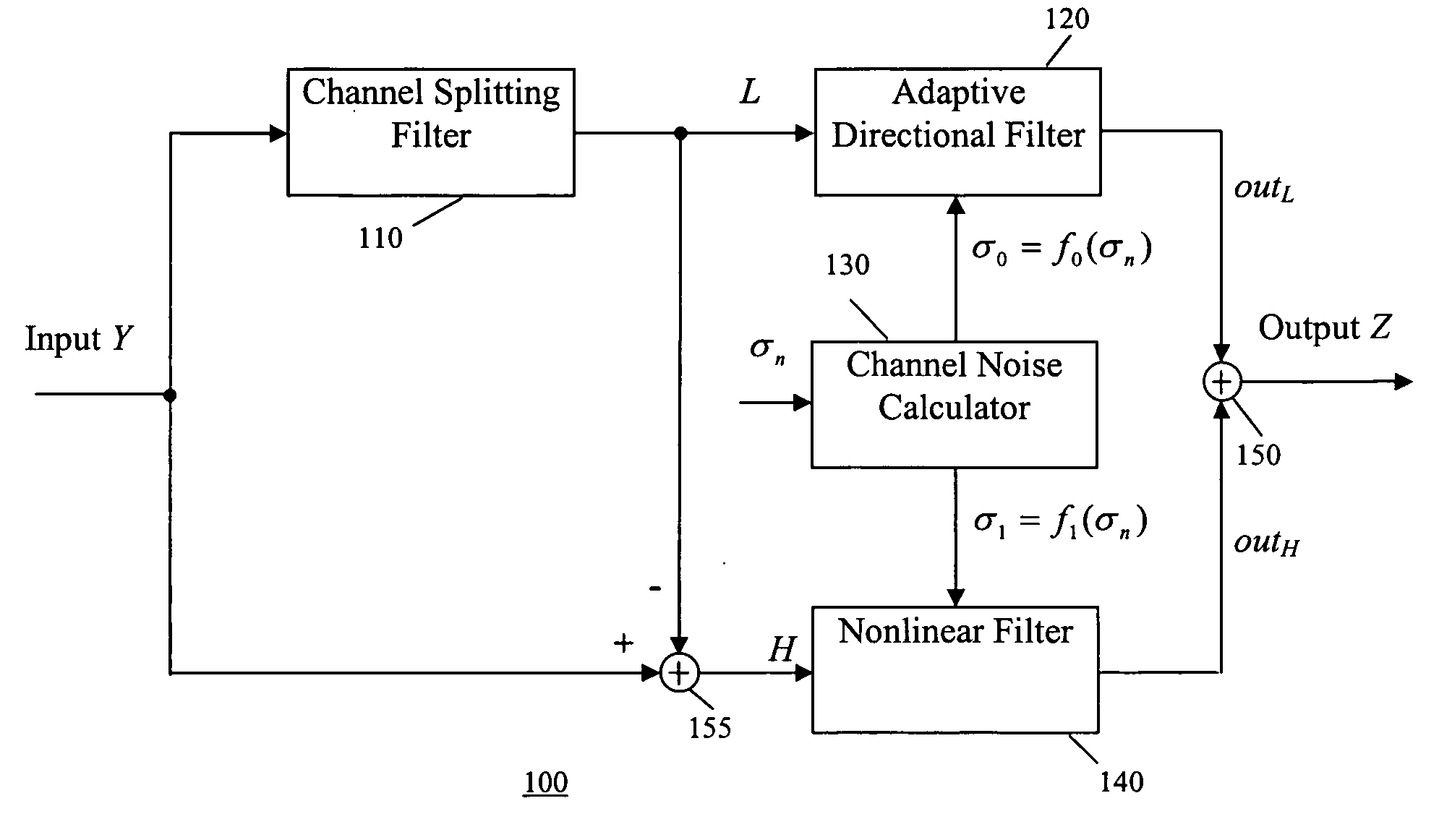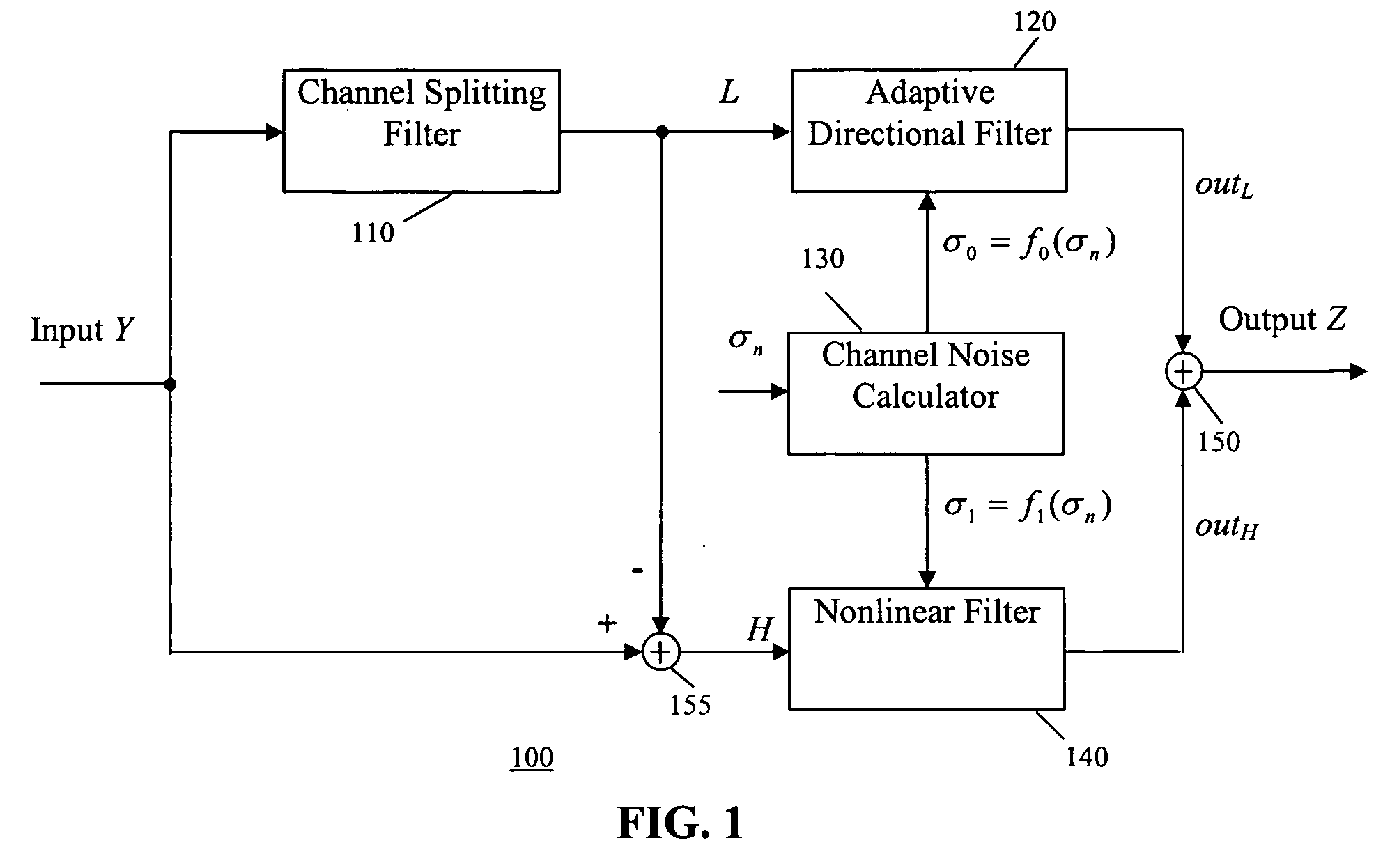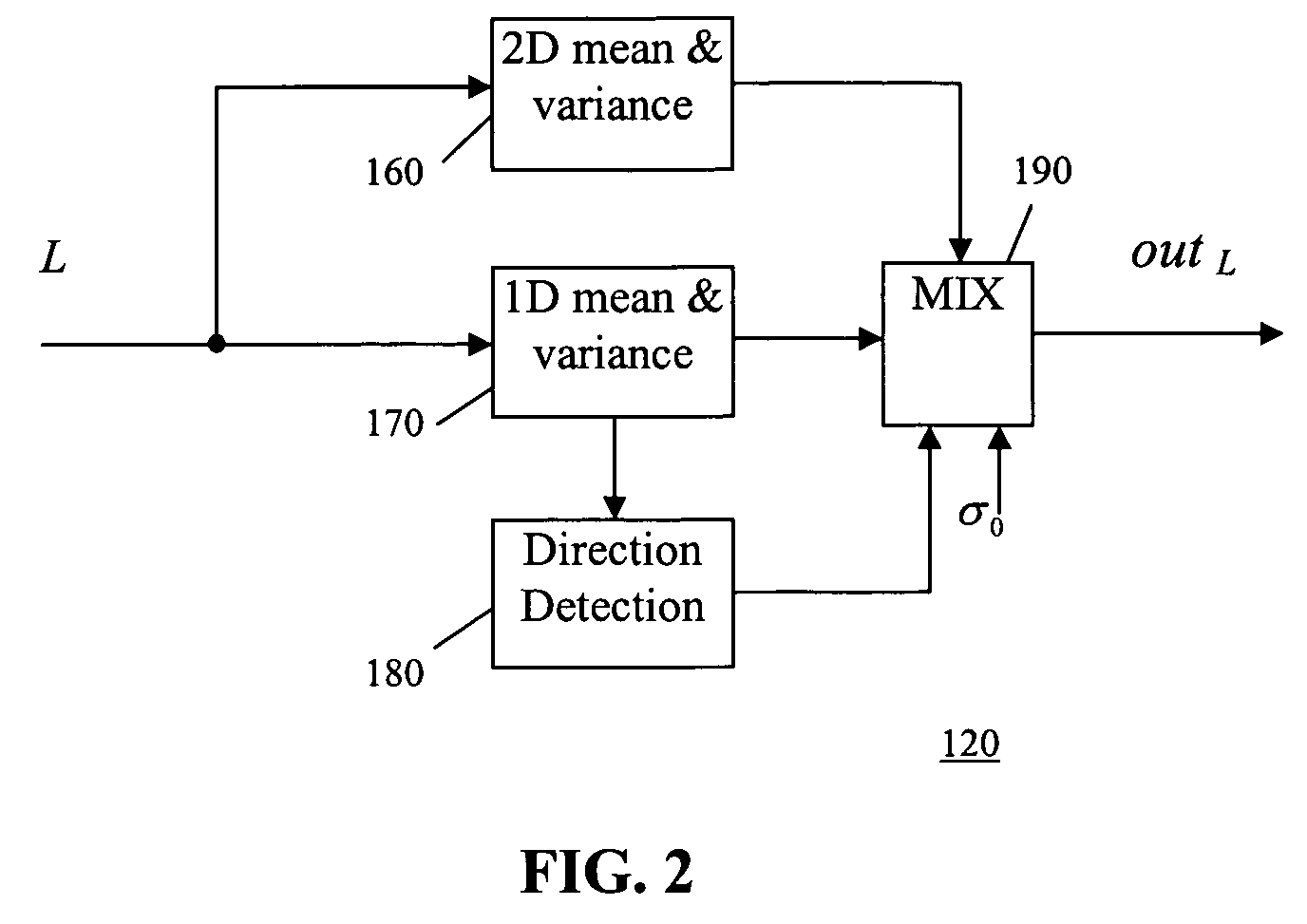Dual-channel adaptive 2D noise reduction for video signals
a video signal and adaptive technology, applied in the field of image processing, can solve the problems of video signal corruption, video noise is a major source of picture quality degradation, and video noise is becoming more annoying for viewers
- Summary
- Abstract
- Description
- Claims
- Application Information
AI Technical Summary
Benefits of technology
Problems solved by technology
Method used
Image
Examples
Embodiment Construction
[0013] Referring to FIG. 1, a function block diagram of a dual-channel 2D adaptive noise reduction system 100 according to an embodiment of the present invention is shown. The digital input image signal comprises frames of pixels, wherein the input image pixels are first split into two channels (i.e., a low-pass channel L and the high-pass channel H), by a carefully designed channel splitting filter 110. Then the two channel signals L, H are processed separately.
[0014] The low-pass channel signal L is processed by an adaptive directional filter 120 based on the estimation of the local image 2D and 1D statistics, and the detection of the local image structure direction. The adaptive directional filter 120 switches between 2D filtering and 1D filtering based on the estimation of the local statistics and the noise level of the low-pass channel signal L, which is derived from the noise level of the original input signal using a channel noise calculator 130. In the homogeneous image reg...
PUM
 Login to View More
Login to View More Abstract
Description
Claims
Application Information
 Login to View More
Login to View More - R&D
- Intellectual Property
- Life Sciences
- Materials
- Tech Scout
- Unparalleled Data Quality
- Higher Quality Content
- 60% Fewer Hallucinations
Browse by: Latest US Patents, China's latest patents, Technical Efficacy Thesaurus, Application Domain, Technology Topic, Popular Technical Reports.
© 2025 PatSnap. All rights reserved.Legal|Privacy policy|Modern Slavery Act Transparency Statement|Sitemap|About US| Contact US: help@patsnap.com



